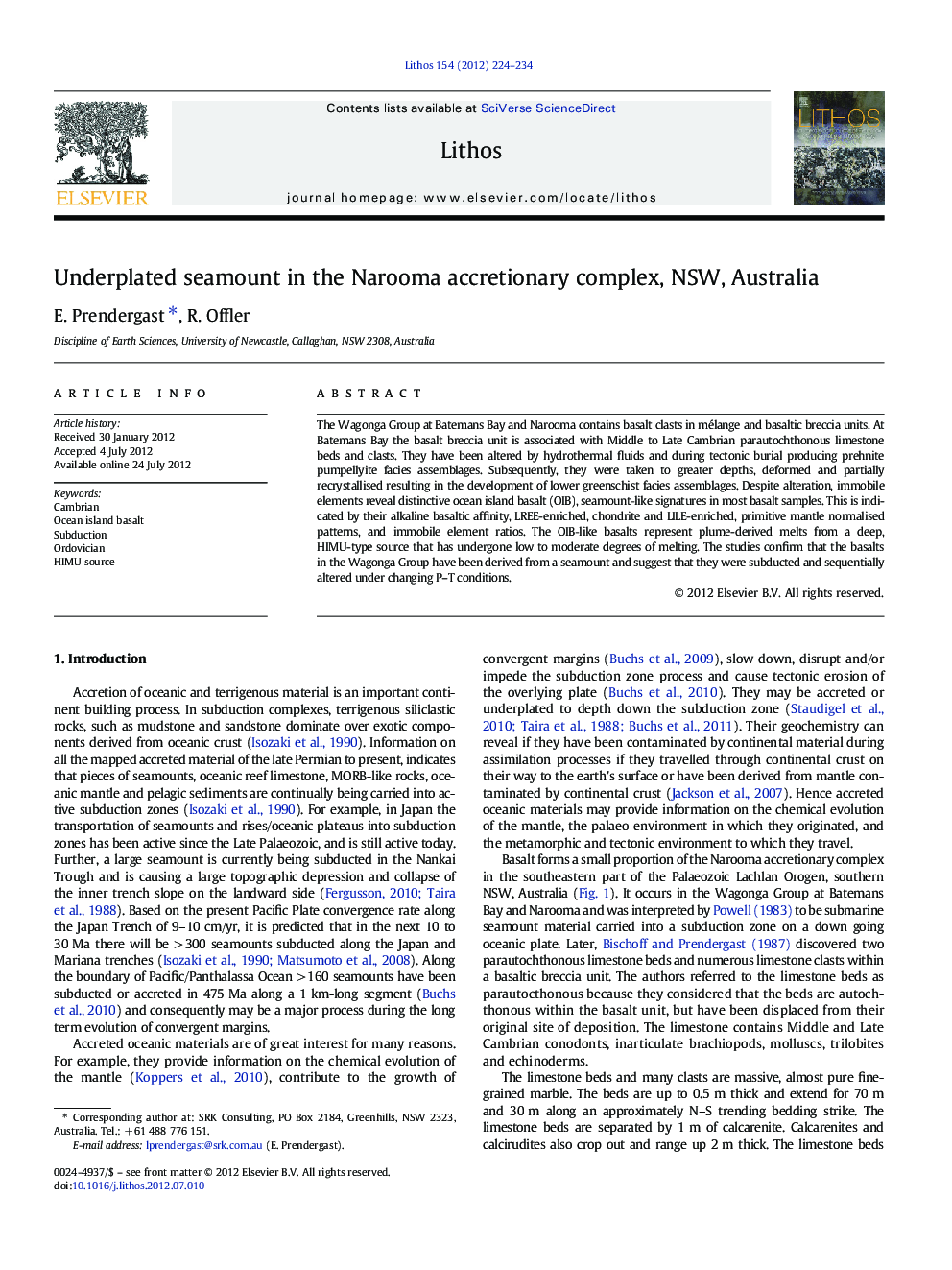| Article ID | Journal | Published Year | Pages | File Type |
|---|---|---|---|---|
| 4716407 | Lithos | 2012 | 11 Pages |
The Wagonga Group at Batemans Bay and Narooma contains basalt clasts in mélange and basaltic breccia units. At Batemans Bay the basalt breccia unit is associated with Middle to Late Cambrian parautochthonous limestone beds and clasts. They have been altered by hydrothermal fluids and during tectonic burial producing prehnite pumpellyite facies assemblages. Subsequently, they were taken to greater depths, deformed and partially recrystallised resulting in the development of lower greenschist facies assemblages. Despite alteration, immobile elements reveal distinctive ocean island basalt (OIB), seamount‐like signatures in most basalt samples. This is indicated by their alkaline basaltic affinity, LREE-enriched, chondrite and LILE-enriched, primitive mantle normalised patterns, and immobile element ratios. The OIB‐like basalts represent plume-derived melts from a deep, HIMU-type source that has undergone low to moderate degrees of melting. The studies confirm that the basalts in the Wagonga Group have been derived from a seamount and suggest that they were subducted and sequentially altered under changing P–T conditions.
► We present evidence for a Cambrian seamount underplated during Early to Middle Palaeozoic subduction. ► Basalts have an ocean island basalt (OIB) affinity. ► Magmas were plume derived melts from a deep, HIMU-type source with low to moderate degrees of melting. ► The seamount basalts were hydrothermally altered and then subjected to lower greenschist facies conditions during subduction.
